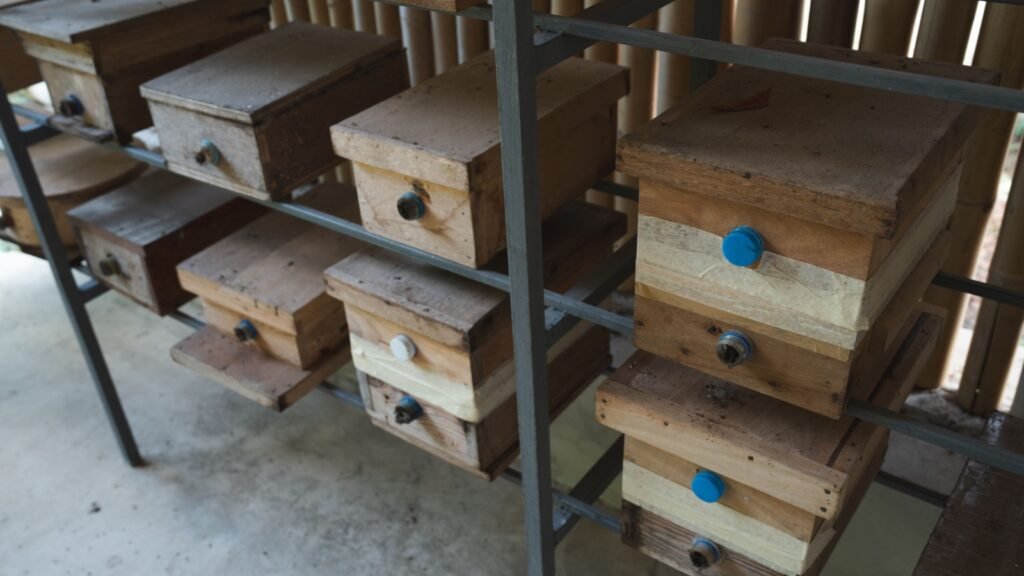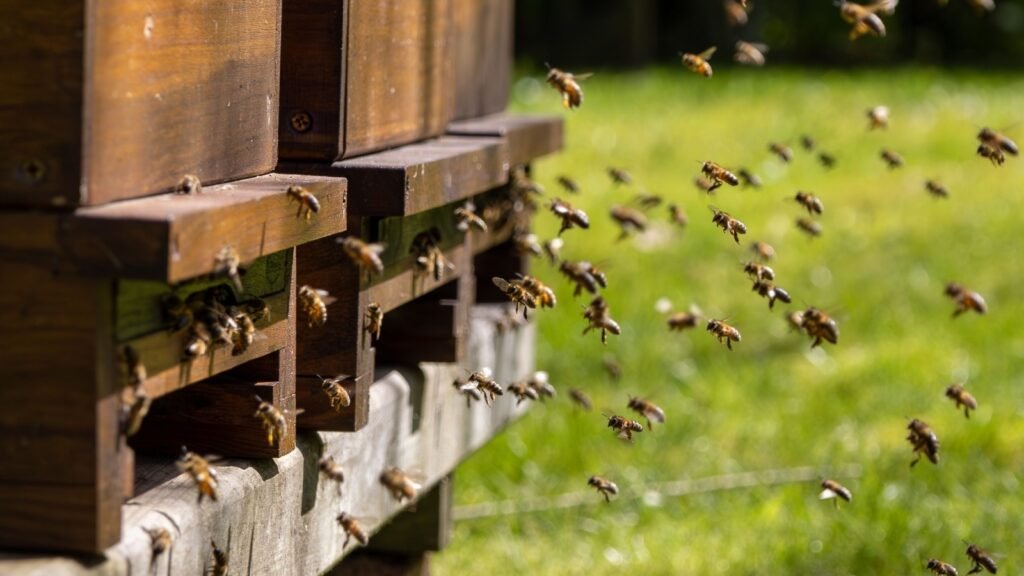Beekeeping is more than just a hobby—it’s a way to connect with nature, support local ecosystems, and enjoy the sweet rewards of honey production. Whether you’re new to beekeeping or a seasoned pro, there are always new things to learn to help your hive thrive. Over the years, I’ve learned that preparation and knowledge are key to keeping your bees healthy and productive. If you’re looking to avoid common mistakes and create an environment where your bees can flourish, I’ve got you covered. Here are 12 key tips that will guide you toward successful beekeeping, ensuring both you and your bees can enjoy a happy, productive relationship.
1. Choose the Right Location for Your Hive

Picking the right spot for your beehive is crucial for the health and safety of your bees. Ideally, the hive should be placed in a sunny location that gets some afternoon shade, with shelter from high winds. Avoid placing your hive near busy human activity areas, as bees are easily disturbed. The right location ensures your bees can forage, stay warm, and avoid stress.
2. Start with a Local Bee Species

Selecting a bee species that is well-adapted to your local environment will give you a head start. Local bees are more resistant to diseases, pests, and weather fluctuations in your area. They’re also more likely to thrive with the available plants for nectar and pollen. You’ll have fewer challenges with a species that’s already used to your specific climate.
3. Invest in High-Quality Equipment

Good equipment is essential for a smooth beekeeping experience. You’ll need a bee suit, gloves, a smoker, hive tools, and a hive setup that includes frames and a foundation. Cheap or low-quality gear can cause accidents or stress for both you and the bees. Investing upfront in solid tools means fewer headaches later.
4. Learn to Spot Healthy Brood Patterns

A healthy brood pattern means your queen is laying eggs in a consistent, organized pattern. This indicates a strong, healthy colony. Regularly inspect your hive to make sure that eggs, larvae, and pupae are present and well-distributed. Irregular patterns or missing brood could be signs of disease or stress in the hive.
5. Monitor for Common Bee Pests and Diseases

Keeping your bees healthy involves vigilance. Varroa mites, wax moths, and American foulbrood are just a few of the pests and diseases that can devastate a colony. Regular inspections and early intervention are key to keeping these threats under control. Use natural or chemical treatments as necessary, but always research the safest methods.
6. Feed Your Bees When Necessary

Although bees forage for food, there will be times when they need a little help. During winter or periods of drought, consider supplementing with sugar water or pollen substitutes. However, avoid overfeeding, as this can create dependency. Providing food when they truly need it helps the colony stay strong during tough times.
7. Maintain Proper Hive Ventilation

Good ventilation helps your hive stay dry and prevent moisture buildup, which can lead to mold and disease. Make sure your hive has adequate airflow, especially in humid climates. You can adjust ventilation by using screened bottom boards or propping the hive lid slightly. Proper ventilation is particularly important during winter months.
8. Understand Your Local Beekeeping Laws

Before starting, familiarize yourself with local regulations regarding beekeeping. Some areas have rules about the number of hives, distance from neighbors, and hive registration. Understanding these laws can prevent fines or complaints. Plus, being a responsible beekeeper benefits your entire community by reducing risks of bee swarms or accidents.
9. Provide a Clean Water Source

Bees need a nearby water source to regulate the temperature of their hive and produce honey. Set up a shallow water dish with stones or sticks for them to land on, as they can easily drown in deep water. Having a reliable water source keeps your bees healthy and prevents them from venturing too far.
10. Inspect Your Hive Regularly

Frequent inspections are key to maintaining a thriving colony. By checking your hive every 7-10 days during the active season, you’ll be able to monitor the queen’s health, spot potential problems, and make sure everything is functioning smoothly. Regular checks help you stay ahead of issues before they escalate.
11. Be Patient with Your Bees

Beekeeping requires patience. Sometimes the colony takes longer to grow, or honey production is slower than expected. Resist the urge to over-intervene or open the hive too frequently. Trust the bees to do their job, and give them time to adjust to their environment. Slow, steady progress leads to healthier, more productive colonies.
12. Harvest Honey Responsibly

When it’s time to harvest honey, make sure not to take too much. Bees need enough honey to sustain themselves, especially during winter. Only take excess honey, and always leave enough for the colony to survive. Responsible harvesting ensures the long-term health of your bees and guarantees future honey production.

